If you look at all the notes on a piece of sheet music, it is easy to feel a bit scared. How can I learn to read all of those notes? Actually, it is not that difficult. Let me walk you through some of the basic concepts on how to read music.

How to Read Music: A Quick and Easy Lesson
If you want to play a piano or violin or sing in a choir, you must be able to read music. This article gives some tips on how you can learn to read music notes.
Want to Read Music? It's Not That Hard!
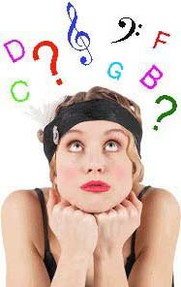 If you are interested in playing a musical instrument (such as a piano, electronic keyboard, violin or flute) or wish to sing in your church choir, you must first learn how to read music. To do this, you must first learn how to read music notes.
If you are interested in playing a musical instrument (such as a piano, electronic keyboard, violin or flute) or wish to sing in your church choir, you must first learn how to read music. To do this, you must first learn how to read music notes.
This is not as difficult to do as many people claim. In this page I will walk you through some of basic concepts of musical notation. Study these and you will be well on your way to reading sheet music and playing and singing to your heart's desire!
How to Read Music
Music Notation
When we read the text in a book or magazine, we are looking a symbols called letters. When we look at sheet music, we are looking at symbols called music notation.
Music notation tells us how high or low each note should be (the pitch) as well as how long, how fast, how soft or loud, and so on.
Pitch
Before we begin studying the elements of music notation, we must discuss the concept of pitch.
Pitch refers to how low or how high a sound is.
A low pitched music note is a low-sounding sound. The keys at the left hand end of the piano keyboard are the lower pitched notes.
A high pitched music note is a high-sounding sound. The keys at the right hand end of the piano keyboard are the higher pitched notes.
Stave
Let us now return to music notation...
When you look at sheet music for the piano or for choir singers, you will first notice that there are sets of five parallel lines on each page. A set of five parallel lines is called a stave (or staff).
Here is what a stave looks like:

Music notes may be written on any of these lines and also in any of the spaces between the lines.
For example:

Higher pitched notes are written on the higher lines and/or in the higher spaces of the stave.
Lower pitched notes are written on the lower lines and/or in the lower spaces of the stave.
Clefs
There are in fact not just one but two staves (or staffs).
One is known as the treble stave and it is marked by a symbol on it called the treble clef:

The other is known as the bass stave and it is marked by a symbol on it called the bass clef:

The treble stave (treble staff) always appears above the bass stave (bass staff). For example:


Notes which are written on the treble staff are higher pitched (that is, with a higher sound).
Notes which are written on the bass staff are lower pitched (that is, with a lower sound).
Middle C
Let us now look at the music notes...
Each note written on a stave corresponds to a particular musical sound: A, B, C, D, E, F or G.
Right on the middle of the piano keyboard is a very important note which we call Middle C.
In music notation, this note is written in the space between the treble stave and the bass staves (it is the note which looks like an oval with a short line drawn through the middle):
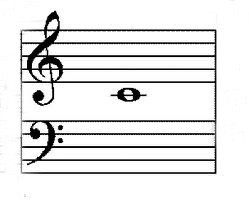
Notes on the Treble Stave
Here is a picture of the notes on the lines and in the spaces of the treble staff:
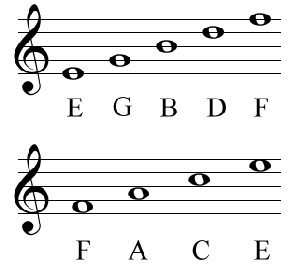
On the lines of the treble stave the following notes may be written: E G B D F
These notes may be memorized by the mnemonic (memory aid):
Every Good Boy Deserves Fruit
In the spaces of the treble stave the following notes may be written: F A C E
These notes may be memorized by the mnemonic (memory aid) that the notes (read from bottom to top) spell the word FACE.
Notes on the Bass Stave
Here is a picture of the notes on the lines and in the spaces of the bass staff:
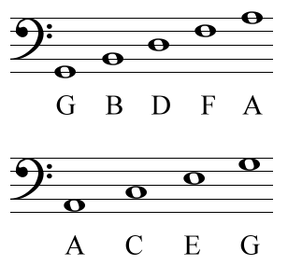
On the lines of the bass stave the following notes may be written: G B D F A
These notes may be memorized by the mnemonic (memory aid):
Good Boys Deserve Fruit Always
In the spaces of the bass stave the following notes may be written: A C E G
These notes may be memorized by the mnemonic (memory aid):
All Cows Eat Grass
Note Duration
Music notation is also designed to tell us the duration of each music note (that is, how long a time the sound of each note lasts relative to those surrounding it).
This note is a whole note (or semibreve):

This note is a half note (or minum) (it lasts for half of the duration of a whole note):

This note is a quarter note (or crotchet) (it lasts for a quarter of the duration of a whole note):

This note is an eighth note (or quaver) (it lasts for an eighth of the duration of a whole note):

This note is a sixteenth note (or semiquaver) (it lasts for a sixteenth of the duration of a whole note):

Recommended Resources on Reading Music Notes
Reading Music Notes With Ease for the Earliest Beginner
"How your child can read music notes easily and quickly - with the help of a gang of cartoon characters with hilarious voices. Multimedia ebook with flash cards and games for follow-up practice."
Reading Music Notes With Ease for the Adult Beginner
"How you can read music notes - easily and quickly. Multimedia ebook with proven memory system to make learning music notes a breeze. Flash cards for practice wherever you are."
More Music Articles
You might also like
Why Playing the Piano can be like eating Fish and ChipsMy feelings on playing the piano and why sometimes I need to take a little br...
Top Reasons To Use Companies That Specialize In Piano RemovalsWhy you should use skilled, professional removalists when moving a piano.
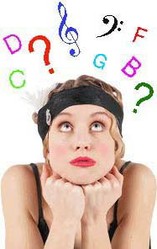








 Ancient Rome: History and Heritageon 02/28/2012
Ancient Rome: History and Heritageon 02/28/2012
 Ancient Greece: History and Heritageon 10/14/2012
Ancient Greece: History and Heritageon 10/14/2012
 Schumann: The Genius Who Composed Scenes From Childhoodon 04/29/2012
Schumann: The Genius Who Composed Scenes From Childhoodon 04/29/2012
 Mahler: The Genius Who Composed the Resurrection Symphonyon 03/04/2012
Mahler: The Genius Who Composed the Resurrection Symphonyon 03/04/2012


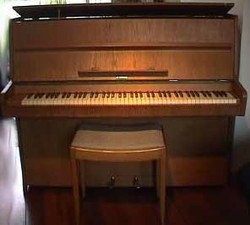
Comments
Thanks to both of you for your comments, bhthanks and katiem2. Glad you found the lesson useful!
Very nice, now I may be able to keep up with my two kids, they are very musically inclined playing many instruments. I lack knowledge and they are just not patient enough to teach Mom. Thanks for this great resource, now I can finally read music .
Very thorough explanation of how to read musical notes. Thank you!